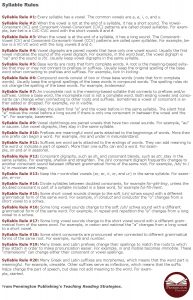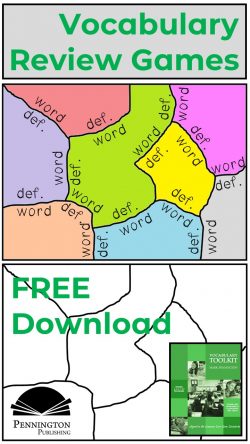Syllable Transformers
Every teacher and parent has heard about transformers: the movies, the action characters, etc. If you’re a parent of a younger child, you know all about Bumblebee.
Since the dawn of the Transformers in 1984, the spunky little Autobot called Bumblebee has been a fan favorite. Why? He was the underdog. He was small, and he was one of the weaker Transformers, but his heart was huge and he showed great bravery on the battlefield. As a result, he was an admired and gentle friend not only to humans, but to his peers as well. And it didn’t hurt that his alternate mode was a cute little yellow Volkswagen Beetle. He now has at least six other transformations! https://screenrant.com/bumblebee-transformers-last-knight-solo-trivia-facts/
What if we could apply that same transformer concept to beginning reading, reading intervention, and multi-syllabic word work? We can with Syllable Transformers.
As a reading specialist working with struggling older readers in the 1990s, I had the pleasure of learning from the late Dr. John Sheffelbine from California State University at Sacramento. John was a self-described “phonicator” and developed both the BPST (Basic Phonics Skills Test), the Scholastic Phonics Readers, and the SIPPS program. One powerful set of lessons that John developed dealt with open (long vowel) and closed (short vowel) syllables. An open syllable is one which ends in a long vowel e.g. bay; a closed syllable ends in a consonant and the vowel is short e.g. bat.
John hypothesized that the best way to learn these open and closed syllable rules was to practice them together: to see how the vowel sound transforms from one syllable pattern to another. Additionally, because educators were transitioning from the whole language/balanced literacy philosophy to a phonics-based approach, many students over-relied on sight words and syllables, rather than upon applying sound-symbol correspondences. The instructional implications were clear that practice in real syllable patterns would not solve the problem for these “look and say” syllable guessers. The answer was to use nonsense syllables. Brilliant!
I tried John’s “Syllable Transformations” and they worked wonders. However, I could see the power of expanding John’s idea to other syllable patterns. I also tweaked his approach to make the methodology a bit more “user-friendly” and “technologically-savvy” (I typed them up and displayed them on a machine we used to call the overhead projector.)
Of course, John’s “Syllable Transformations” prefigured what we now refer to as flexing the vowel and applying set for variability. Years later I developed my own comprehensive reading intervention program (promo below), and I included Syllable Transformers as a quick warm-up activity before multi-syllabic word work. Teachers and students love this fast-paced whole-class response activity.
Examples (Open and Closed Syllables): ba-bam-bay-tay-tat
In my Pennington Multi-Syllabic Strategies for Familiar and Unfamiliar Words I expand the strategy of flexing the vowel to adjusting consonant sound variations, syllable types, syllable division guidelines, common syllable patterns, vowel and consonant accent shifts, and conventional spelling rules to provide a bank of problem-solving choices for decoding and encoding.

The Science of Reading Intervention Program
The Science of Reading Intervention Program: Word Recognition includes explicit, scripted instruction and practice with the 6 Daily Google Slide Activities every reading intervention student needs: 1. Phonemic Awareness 2. Blending, Segmenting, and Spelling 3. Phonics and Heart Words Practice 4. Word Chains 5. Sam and Friends Phonics Books (decodables for olders). 6. Elkonin Sound Box dictations, Personal Sound Walls, and Multi-Syllabic Word Work. Print versions are available for all activities. First Half of the Year Program (55 minutes-per-day, 18 weeks)
The Science of Reading Intervention Program: Language Comprehension resources are designed for students who have completed the word recognition program or have demonstrated basic mastery of the alphabetic code and can read with some degree of fluency. The program features the 5 Weekly Language Comprehension Activities: 1. Background Knowledge Mentor Texts 2. Academic Language, Greek and Latin Morphology, Figures of Speech, Connotations, Multiple Meaning Words 3. Syntax in Reading 4. Reading Comprehension Strategies 5. Literacy Knowledge (Narrative and Expository). Second Half of the Year Program (30 minutes-per-day, 18 weeks)
The Science of Reading Intervention Program: Assessment-based Instruction provides diagnostically-based “second chance” instructional resources. The program includes 13 comprehensive assessments and matching instructional resources to fill in the yet-to-be-mastered gaps in phonemic awareness, alphabetic awareness, phonics, fluency (with YouTube modeled readings), Heart Words and Phonics Games, spelling patterns, grammar, usage, and mechanics, syllabication and morphology, executive function shills. Second Half of the Year Program (25 minutes-per-day, 18 weeks)
The Science of Reading Intervention Program BUNDLE includes all 3 program components for the comprehensive, state-of-the-art (and science) grades 4-adult full-year program. Scripted, easy-to-teach, no prep, no need for time-consuming (albeit valuable) LETRS training or O-G certification… Learn as you teach and get results NOW for your students. Print to speech with plenty of speech to print instructional components.
Literacy Centers, Reading, Spelling/Vocabulary, Study Skills




